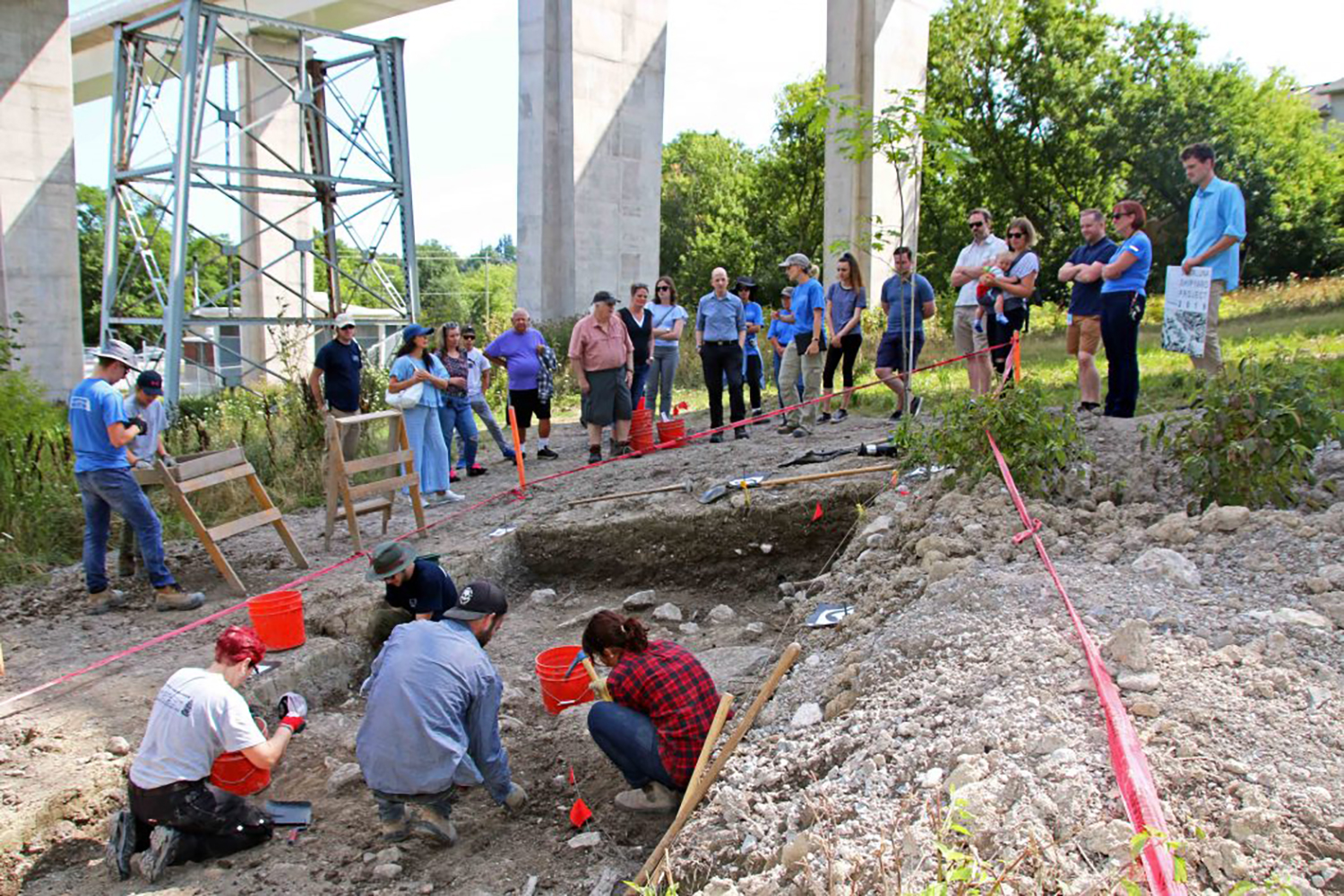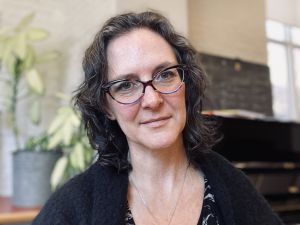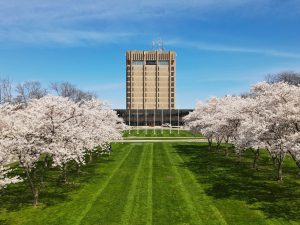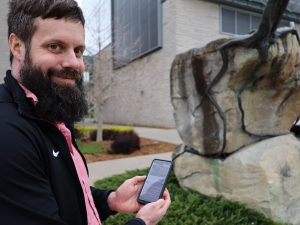 Participants in the HIST/CLAS 3M61 Field School in Local Historical Archaeology continue excavations on a labourer’s cottage while members of the public look on during an excavation open house in 2019. This summer, excavations at the site — the location of the 19th-century Shickluna Shipyard — will resume.
Participants in the HIST/CLAS 3M61 Field School in Local Historical Archaeology continue excavations on a labourer’s cottage while members of the public look on during an excavation open house in 2019. This summer, excavations at the site — the location of the 19th-century Shickluna Shipyard — will resume. After a two-year hiatus, Brock University students will again be digging up history in downtown St. Catharines — and the community is invited to come along.
Archaeologist Kimberly Monk, Adjunct Professor with Brock’s Department of History, is leading an archaeological field school for both Brock students and community members at the site of the 19th-century Shickluna Shipyard. HIST/CLAS 3M60 Field School in Local Historical Archaeology will run as an intensive five-week course from July 11 to Aug. 12. No archaeology experience or previous knowledge is required.
“I’m excited to reconnect with the community and share with our students and the public the experience of documenting this historic shipyard,” Monk says.
One of two dozen shipyards established along the canal, the Shickluna site was built by Maltese immigrant Lewis Shickluna, who is credited with building and repairing more than 200 ships in the late 19th century. In addition to the shipyard buildings and basin, he also built cottages for the workers. The site is now empty land near the Burgoyne Bridge and Twelve Mile Creek.
“Excavating deeper deposits will identify features contemporary with the shipyard and expose a larger quantity of cultural materials related to shipbuilding,” Monk says. “This is a rare opportunity to explore our marine history without donning fins and masks for diving.”

Students in HIST/CLAS 3M61 began excavations on a labourer’s cottage in 2019. Archaeology excavations at the former Shickluna Shipyard will resume in July.
This summer’s excavations will focus on two operation areas identified in 2019: a labourer’s house on the hillside and a boathouse near the river. During the first excavation season in 2019, the team was able to excavate down to the Edwardian (1901-1910) layer.
“Operation Area 3 is a compelling research zone,” says Monk. “This is the location of the boathouse recorded as early as Marcus Smith’s map of 1851. The quantity of finds and intact structural timbers, in addition to both ash and other organic features within the soil, indicate a high activity area that holds particular interest to our understanding of the shipyard.”
The field school is open to Brock students, community members and non-degree seeking students. Students who wish to audit the course and cannot commit to the full five weeks are also welcome.
In addition to gaining practical skills in archaeological survey and excavation, course participants will be trained in how to identify and process artifacts in the lab. The course will also include lectures, workshops, archival research and a field trip to explore Niagara’s industrial heritage by visiting other key 19th-century sites along the Welland Canal.
While the excavation site isn’t open to the general public for safety reasons, Monk is eager to connect the community with the archaeology work being done there. She is already planning a series of open houses to welcome the public on Aug. 10, 13 and 14.
“This is a community project and we encourage the public to join us in documenting the history of St. Catharines,” says Monk. “The site contributes an important chapter toward understanding Great Lakes maritime history.”
For more information about registering for the course, contact history@brocku.ca









